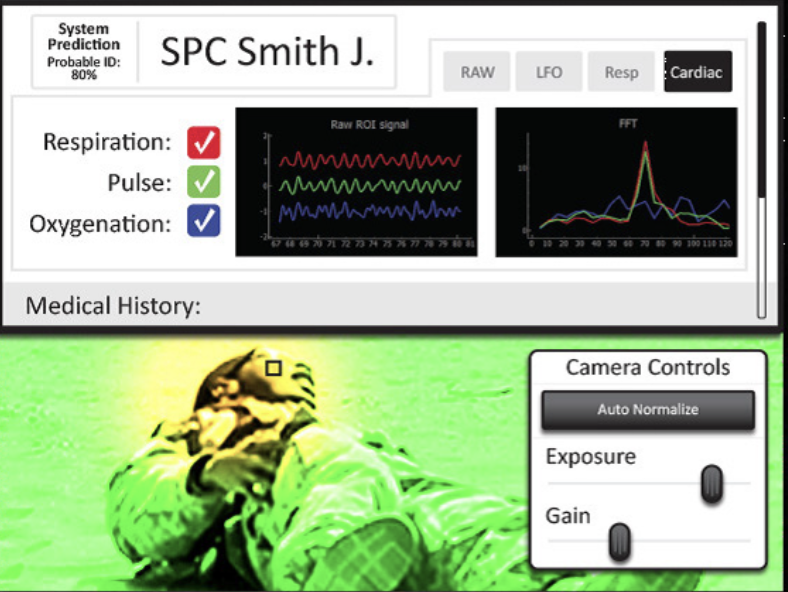SOMBA
A standoff method for
measuring physiological signals
Stand-Off Multispectral Biometric Assay (SOMBA)
The Situation
Neurophysiological techniques are the conventional methods used for state assessment, but they are expensive, obtrusive, and require training to use. Biometric methods are emerging that may also provide data to support estimation of operator state. Biometric techniques for sensing peripheral nervous system indicators (e.g., heart rate, blood pressure, and galvanic skin response) provide an objective means of predicting human states. For instance, during test and evaluation of aircraft, heart rate of both pilot and crew increases during high workload periods within the simulation1. However, biometric data often require body-worn sensors that can be distracting and encumbering.

The Charles River Analytics Solution
Scientists and software engineers at Charles River Analytics developed SOMBA as a non-contact system to unobtrusively measure physiological signals, which can then be translated into indicators for health, identification, and psychological state. We are developing the device for three main use cases:
- Psychological state assessment
- Data collection in interviews and field operations
- Health assessment
- Remote triage to streamline treatment
- Biometric identification

The Benefit
SOMBA can be used assess to physiological signals without any physical contact with the individual being assessed, yielding meaningful information about human state.
Contact us to learn more about SOMBA and our other health and medical capabilities.
1 Bonner, M. A., & Wilson, G. F. (2002). Heart rate measures of flight test and evaluation. The International Journal of Aviation Psychology, 12(1), 63-77.
